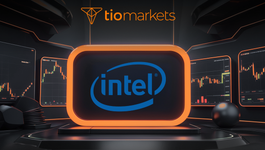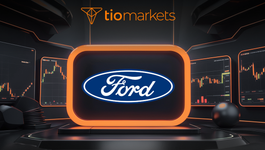Futures Trading: What Are Futures and How to Trade Them | TIOmarkets
BY TIOmarkets
|June 6, 2024Futures trading represents a pivotal component of the financial markets, offering traders and investors a unique mechanism to hedge against price volatility or speculate on the future prices of various assets. This article delves into the essence of futures contracts and outlines a comprehensive guide on how to engage in futures trading effectively.
Understanding Futures Contracts
A futures contract is a standardized legal agreement to buy or sell a particular commodity or financial instrument at a predetermined price at a specified time in the future. Unlike the direct purchase of assets, futures allow participants to bet on the direction of an asset's price movement.
Key Characteristics of Futures Contracts
Futures contracts are marked by several defining features that distinguish them from other financial instruments. Firstly, they are traded on regulated exchanges, ensuring transparency and reducing counterparty risk. Secondly, they require a margin deposit as a performance bond, which is a fraction of the contract's full value. Lastly, futures contracts are subject to daily settlement, meaning the gains or losses are calculated and credited or debited from the trader's account daily.
Another aspect to consider is the standardization of futures contracts. This includes the quantity and quality of the commodity or the specifics of the financial instrument, delivery time, and terms. Standardization facilitates the ease of trading on futures exchanges.
Types of Futures Contracts
Futures contracts can be categorized into two main types: commodity futures and financial futures. Commodity futures cover tangible products like oil, gold, and agricultural products. Financial futures, on the other hand, are based on financial instruments and indices, such as currencies, interest rates, and stock indices.
Each type of futures contract serves different market participants' needs, from farmers looking to hedge against crop price movements to investors speculating on interest rate changes.
Benefits of Trading Futures
One of the key advantages of trading futures is the ability to access a wide range of markets and assets without the need for physical ownership. This provides traders with flexibility and diversification opportunities that may not be available in other investment vehicles.
Furthermore, futures markets operate nearly 24 hours a day, allowing traders to react to global events and news in real-time. This continuous market access can be advantageous for those looking to capitalize on market movements outside regular trading hours.
How to Trade Futures
Trading futures requires understanding the market, the specific contract specifications, and a well-thought-out trading strategy. Here's a step-by-step guide to get started with futures trading.
Step 1: Open a Trading Account
The first step in trading futures is to open an account with a brokerage that offers futures trading. It's important to choose a broker that provides a robust trading platform, competitive fees, and excellent customer support.
During the account setup process, traders will need to provide financial information and meet certain requirements to trade futures, as these products involve significant risk.
Step 2: Learn and Understand Futures Contracts Specifications
Before diving into trading, it's crucial to familiarize yourself with the specifications of the futures contracts you intend to trade. This includes the contract size, tick size (minimum price movement), and the margin requirements. Understanding these details will help in planning trades and managing risk.
Many brokers offer educational resources and demo accounts to practice trading without risking real money, which can be invaluable for beginners.
Step 3: Develop a Trading Strategy
Successful futures trading relies on a solid strategy. This could range from technical analysis, focusing on price patterns and market trends, to fundamental analysis, which considers economic indicators and news events. Many traders also use a combination of both approaches.
It's also essential to have a risk management plan in place, including setting stop-loss orders to limit potential losses.
Step 4: Start Trading
With a trading account set up, an understanding of futures contracts, and a strategy in place, you're ready to start trading. It's advisable to begin with small positions to manage risk effectively, especially for those new to futures trading.
Monitoring the markets and staying informed about events that could impact prices is also crucial for making informed trading decisions.
Risks and Considerations
While futures trading offers the potential for profit, it also comes with significant risks. The leverage associated with futures can amplify gains but also losses. It's important for traders to understand these risks and to trade responsibly.
Leverage Risk
The use of leverage means that small market movements can lead to large gains or losses compared to the initial margin. Traders need to be cautious and employ effective risk management strategies to mitigate these risks.
Market Volatility
Futures markets can be highly volatile, influenced by a myriad of factors including economic data, geopolitical events, and market sentiment. This volatility can result in rapid price movements, posing a challenge for traders.
Regulatory Considerations
It's essential for futures traders to stay informed about regulatory changes and compliance requirements in the jurisdictions where they operate. Regulatory frameworks can impact trading conditions, margin requirements, and the overall market environment.
Compliance with regulations not only ensures a trader's legal standing but also contributes to market stability and integrity.
Technical Analysis in Futures Trading
Technical analysis plays a crucial role in futures trading, helping traders identify potential entry and exit points based on historical price data and market trends. Common technical indicators used in futures trading include moving averages, relative strength index (RSI), and Fibonacci retracement levels.
By analyzing price charts and patterns, traders can make informed decisions about when to enter or exit trades, as well as manage risk effectively.
Chart Patterns
Chart patterns, such as head and shoulders, double tops, and triangles, are commonly used in technical analysis to predict future price movements. Recognizing these patterns can provide traders with valuable insights into market sentiment and potential price direction.
It's important for traders to combine technical analysis with other forms of analysis, such as fundamental analysis, to gain a comprehensive understanding of the market dynamics.
Algorithmic Trading
Algorithmic trading, also known as automated trading, utilizes computer algorithms to execute trades based on predefined criteria. In futures trading, algorithms can analyze market data, identify trading opportunities, and execute orders at high speeds, taking advantage of price discrepancies and market inefficiencies.
Algorithmic trading can help traders remove emotional biases from decision-making and improve trade execution efficiency.
Conclusion
In conclusion, futures trading offers a dynamic and potentially rewarding opportunity for those willing to navigate its complexities. By understanding the fundamentals of futures contracts, carefully planning trades, and managing risks, traders can participate in the futures market with greater confidence and insight.
Start Trading Futures with TIOmarkets
Ready to take the leap into the world of futures trading? Join TIOmarkets, the top rated forex broker that empowers you to trade over 300 instruments across 5 markets, including Forex, indices, stocks, commodities, and futures, all with low fees. With over 170,000 accounts opened in more than 170 countries, we're committed to providing you with the tools and education you need to trade effectively. Take advantage of our comprehensive educational resources and step-by-step guides designed for traders of all levels. Don't wait any longer to elevate your trading journey. Create a Trading Account today and start navigating the futures market with TIOmarkets.

Risk disclaimer: CFDs are complex instruments and come with a high risk of losing money rapidly due to leverage. You should consider whether you understand how CFDs work and whether you can afford to take the high risk of losing your money. Never deposit more than you are prepared to lose. Professional client’s losses can exceed their deposit. Please see our risk warning policy and seek independent professional advice if you do not fully understand. This information is not directed or intended for distribution to or use by residents of certain countries/jurisdictions including, but not limited to, USA & OFAC. The Company holds the right to alter the aforementioned list of countries at its own discretion.
Join us on social media

Behind every blog post lies the combined experience of the people working at TIOmarkets. We are a team of dedicated industry professionals and financial markets enthusiasts committed to providing you with trading education and financial markets commentary. Our goal is to help empower you with the knowledge you need to trade in the markets effectively.
Related Posts





